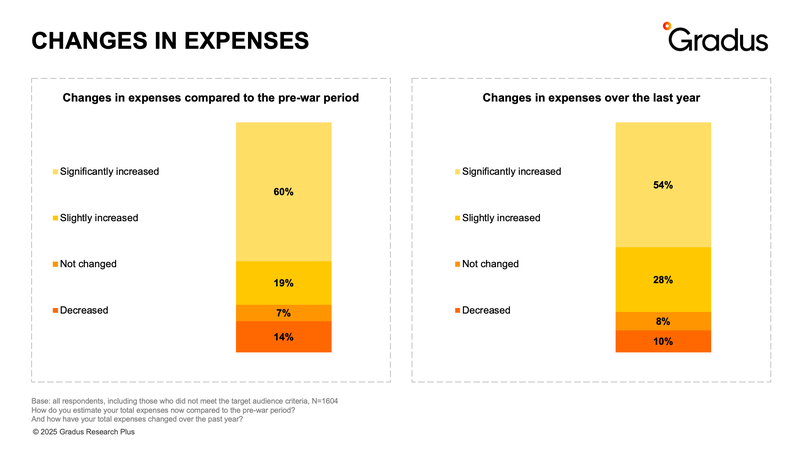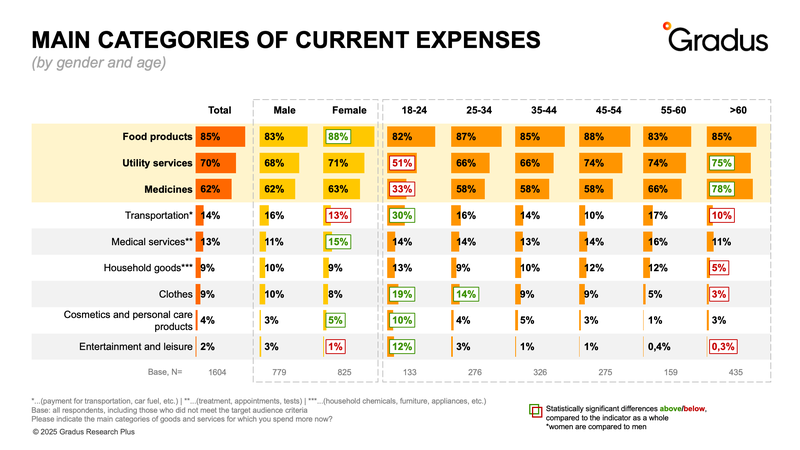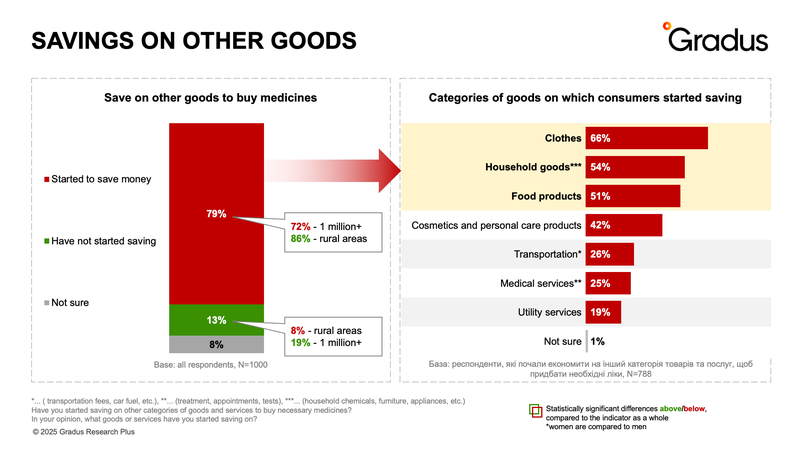Consumer trends. Part 1: pharma

The full-scale invasion and the economic situation in Ukraine have significantly affected price levels across various categories of goods and services. Nearly two-thirds of respondents report a substantial increase in expenses compared to the pre-war period. As part of a broader consumer trends research, Gradus Research is publishing the results of the first wave focused on changes in consumer behavior related to personal health care.

Rising prices for goods and services are widely noticed by the population. The vast majority of respondents (82%) report increased expenses over the past year.
Medicine is among the TOP-3 spending categories for Ukrainians
The main categories of spending include food (85%), utility services (72%), and medicine (60%).

As expected, among respondents aged 60 and older, the majority (78%) named medicine as one of their primary expenses.
The highest share of people for whom medicine is a major expense lives in villages — 71%, compared to 50% in towns with populations of up to 50,000. This is likely due to the fact that a significantly larger proportion of older people live in rural areas.
For the overwhelming majority, rising medicine prices are a serious issue
Overall, 94% of surveyed Ukrainians have noticed the rising cost of medicine. For 90% of respondents, this has become a serious problem that forced them to reconsider their spending and start saving.
79% have already begun seeking ways to cut costs — most commonly on clothing, household goods, and food. This trend is most prevalent in rural areas, where 86% of residents have started saving. The lowest rate of cost-cutting is seen in major cities with populations over one million — 72%.

The situation is especially critical for people aged 60 and older: 62% of them have had to reduce spending on food, and 66% of those aged 55–60 have cut back on household goods.
This indicates that the rising cost of medicine is not just affecting the population’s standard of living — it is forcing people to forgo basic needs, which could have serious social and health consequences.
The full report is available for download at the link.
The survey was conducted by the research company Gradus Research using a self-administered questionnaire in the Gradus mobile app. The sample reflects the structure of Ukraine’s population aged 18+ by gender, age, settlement size, and region, excluding temporarily occupied territories and areas of active hostilities.
Fieldwork period: March 20–28, 2025. Sample size: Total — 1,604 respondents; Target audience — 1,000 respondents.
Other reports
-
 Wartime survey of Ukrainian society / thirteenth waveDecember 2025Ukrainians Seek a Sustainable Peace and Do Not Believe in a Quick End to the War
Wartime survey of Ukrainian society / thirteenth waveDecember 2025Ukrainians Seek a Sustainable Peace and Do Not Believe in a Quick End to the War -
 How Ukrainians feel in the 4th year of war and how they copeDecember 2025Special survey for the 18' People Management Conference
How Ukrainians feel in the 4th year of war and how they copeDecember 2025Special survey for the 18' People Management Conference -
 Consumer pragmatism: how war has changed our consumption habitsDecember 2025Special survey in partnership with Vogue Ukraine
Consumer pragmatism: how war has changed our consumption habitsDecember 2025Special survey in partnership with Vogue Ukraine -
 In a new light: Gradus presented its new identity and positioningDecember 2025The rebranding included an updated identity and a new positioning , created in collaboration with Netpeak Agency
In a new light: Gradus presented its new identity and positioningDecember 2025The rebranding included an updated identity and a new positioning , created in collaboration with Netpeak Agency





